Struggling to find tech candidates who actually meet your skill requirements? You're not imagining it.
Recently, research revealed that 53% of organizations in 2025 cite a lack of candidates with the required skills or experience as their top hiring challenge.
In this guide, we’ll explain how to find tech talent, so you can compete confidently in a crowded, fast-moving market.
Let’s dive in.
Key takeaways:
- The tech talent shortage is widening.
Employers risk project delays and lost revenue as demand for skilled tech workers far exceeds supply.
- Top candidates want more than just a paycheck.
Flexibility, purpose, growth, and inclusive culture now outweigh salary for most top tech professionals.
- Your hiring process might be turning people away.
Long, outdated hiring processes often deter candidates, while AI and skills-based tools help expedite the process.
- Strong employer branding and EVP are non-negotiable.
If your values and culture aren’t clear online, candidates will skip your company without a second thought.
- Want to attract top tech talent without the hiring headache?
Cohort AI helps you find, screen, and shortlist top developers more efficiently with reduced manual effort.
Why is it so hard to hire Tech talent in 2025?
The tech hiring market is in high demand and short on supply.
In the U.S., tech jobs are expected to grow from 6 million in 2023 to 7.1 million by 2034, expanding twice as fast as the broader labor force.
To put this in better perspective, 70% of tech workers received multiple job offers before accepting their most recent position.
“I consider the most important job of someone like myself as recruiting.” Steve Jobs — “The Man in the Machine”
However, this isn’t just a U.S. trend; in Europe, the gap is widening rapidly.
By 2027, the EU alone could be short 1.4 to 3.9 million tech professionals, with demand outpacing supply by up to four times.
What is the cost of not hiring fast enough?
This means that falling behind on hiring has serious consequences, as:
- Replacing a skilled tech employee can cost up to 150% of their annual salary.
- Unfilled roles delay projects, impact revenue, and slow down innovation.
- One estimate projects that the U.S. could lose over $160 billion in revenue by 2030 due to unfilled tech roles.
What might be a solution?
To succeed in this environment, companies need to change how they hire and focus on what today’s tech professionals actually want.
The most sought-after candidates also prioritize:
- Meaningful work: Developers want to contribute to projects that have a real impact.
- Flexibility: Most tech professionals expect remote options and control over their work hours.
- Growth opportunities: They seek roles with clear paths to learn and advance their careers.
- Inclusive culture: Candidates look for workplaces that are respectful, diverse, and supportive.
Essentially, the best candidates choose employers who align with their values, invest in their growth, and provide them with the freedom to do great work.
Now, let’s look at what you can actually do to find and hire top tech talent, even in a competitive market.
1. Use AI hiring to boost fairness and speed
Traditional hiring methods often filter out great candidates and slow down the process.
Combining automation with skills-first assessments can streamline your process, reduce bias, and help you find better talent faster.
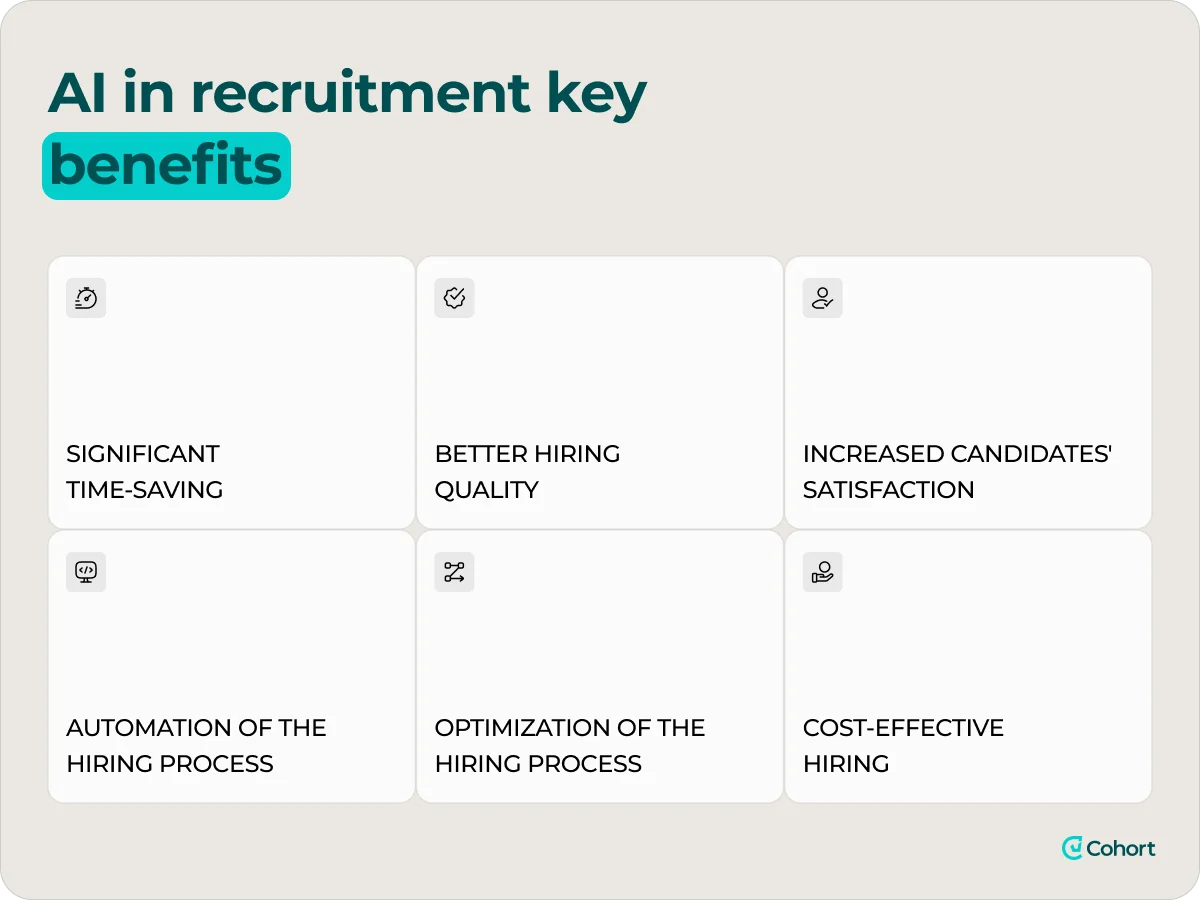
💡 Why it matters:
Manual resume reviews and gut-feel interviews often miss high-potential candidates.
Recent research shows that in an AI in hiring survey, 99% of hiring managers now use AI recruitment tools in some part of the hiring process, and 98% say it has improved their hiring process.
✅ What to do:
- Adopt AI-powered tools: Utilize recruiting automation tools to efficiently identify top candidates based on skills, not just keywords.
- Automate admin tasks: Deploy AI chatbots to answer FAQs and schedule interviews, freeing your recruiters to focus on more in-depth conversations.
- Run skills-based assessments: Replace guesswork with coding challenges, simulations, or structured tasks to eliminate uncertainty.
- Reduce bias with blind screening: Strip identifying info from applications and evaluate work samples instead.
- Balance tech and human insight: Let AI triage, then bring in experienced reviewers for final evaluations.
💡 Pro tip
Cohort AI can instantly surface the top 3 candidates for any technical role by combining generative AI with a curated talent pool of over 1 million vetted professionals.
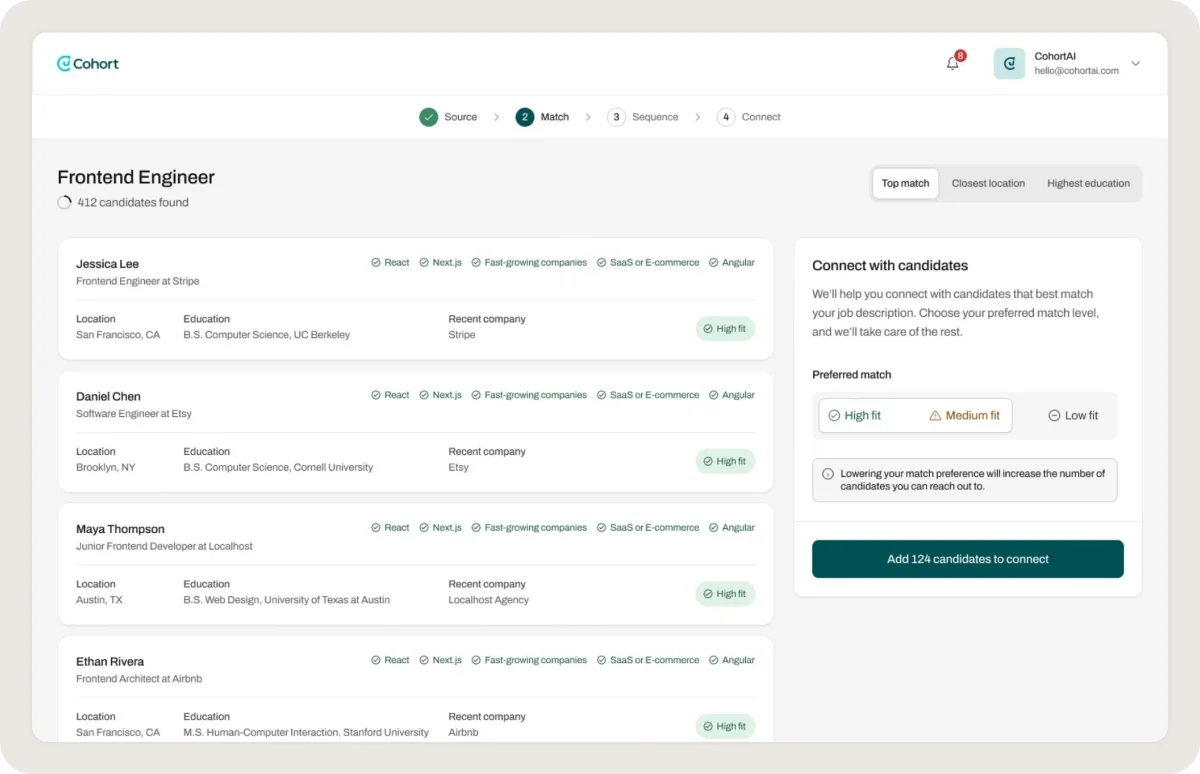
It simplifies hiring by automating sourcing, evaluation, and selection, while keeping human judgment at the core of final decisions.
2. Streamline the recruitment process to find tech talent fast
Great candidates move fast, and if your hiring process drags, lacks communication, or includes too many hoops, they’ll drop out or accept another offer before you’ve even replied.
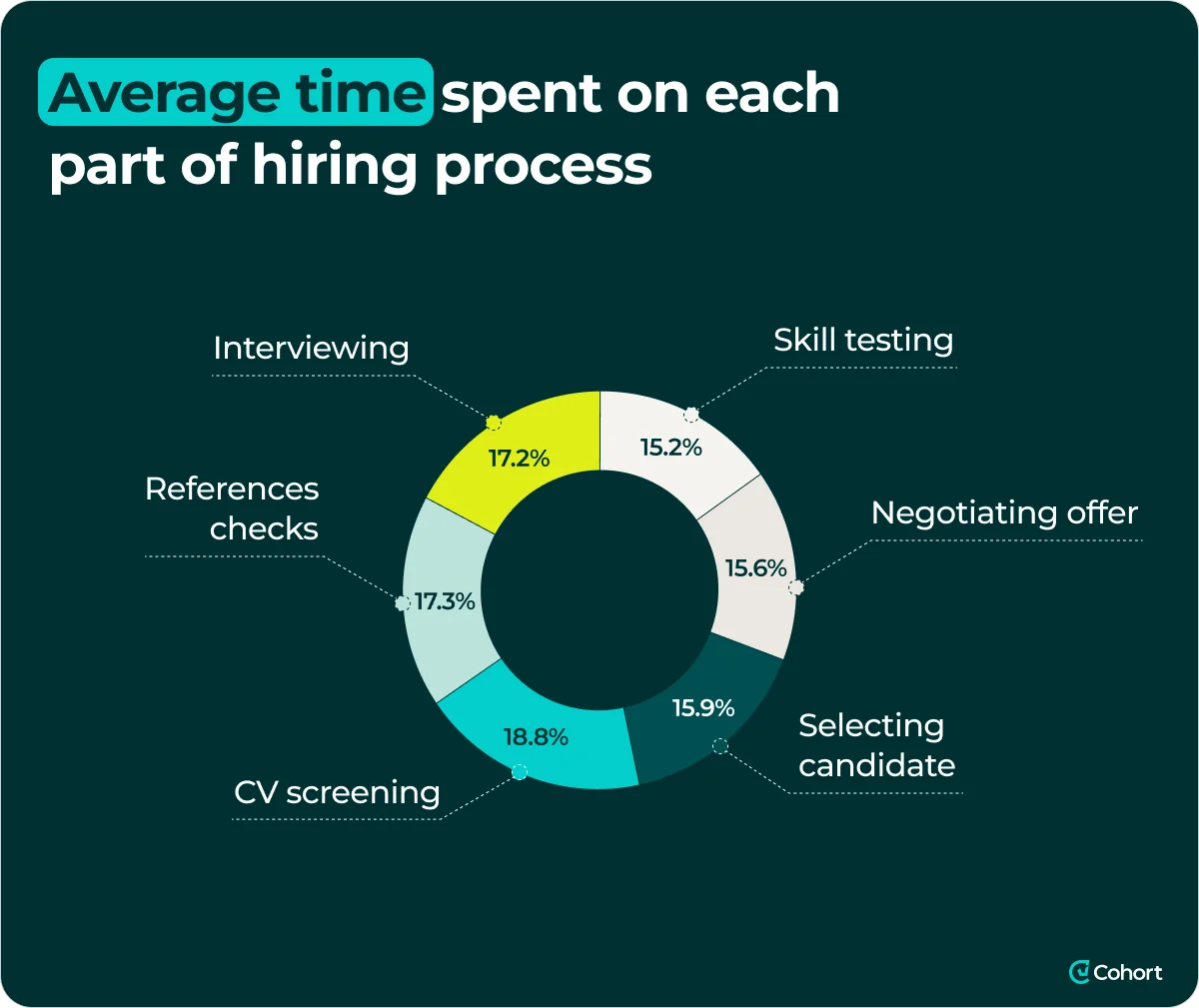
💡 Why it matters:
Hiring timelines are worsening, as 60% of companies reported longer time-to-hire periods in 2024, up from 44% the previous year.
Add in vague communication, slow feedback, irrelevant assessments, and overloaded recruiters, and candidates quickly lose interest or drop out.
✅ What to do instead:
- Use AI to save time: Implement resume screening tools, scheduling bots, and automated candidate messaging.
- Run skills-based assessments: Use real-world tasks (e.g., coding problems, debugging, data interpretation) that align with the role.
- Use structured interviews: Standardize questions and scoring rubrics to ensure fairness and consistency.
3. Build a strong employer brand
Top talent looks beyond the job description, as they want to know what your company stands for.
If your brand is invisible, inconsistent, or feels overly corporate, candidates are likely to move on quickly.
💡 Why it matters:
Companies with a clear, well-known brand see up to 43% lower cost-per-hire.
In comparison, those with a weak or negative reputation often need to offer salaries 10% higher than the market rate just to stay competitive.
✅ What to do:
- Define and clearly communicate your culture, values, and mission.
- Showcase engineering culture through open-source, conferences, or behind-the-scenes content.
- Ensure your careers page and job postings speak directly to tech talent.
4. Enhance your Employee Value Proposition (EVP)
Your EVP is the value exchange between your company and its employees, and it answers the question: “What’s in it for me?”
A strong EVP helps candidates compare offers and imagine life at your company before they ever apply.

💡 Why it matters:
A clear EVP showcases your values, culture, and benefits, as without it, even great benefits might get overlooked.
Additionally, a strong EVP also helps you hire faster and keep people longer.
✅ What to do:
- Define your EVP pillars: compensation, learning, flexibility, mission, culture, and career path.
- Tailor your messaging to your ideal candidate persona (junior devs ≠ veteran engineers).
- Weave EVP into job posts, interviews, career pages, and recruiter outreach.
💡 Pro tip
Cohort’s Charlie the Closer handles nudging, Q&A, and post-interview engagement without the need for manual check-ins.
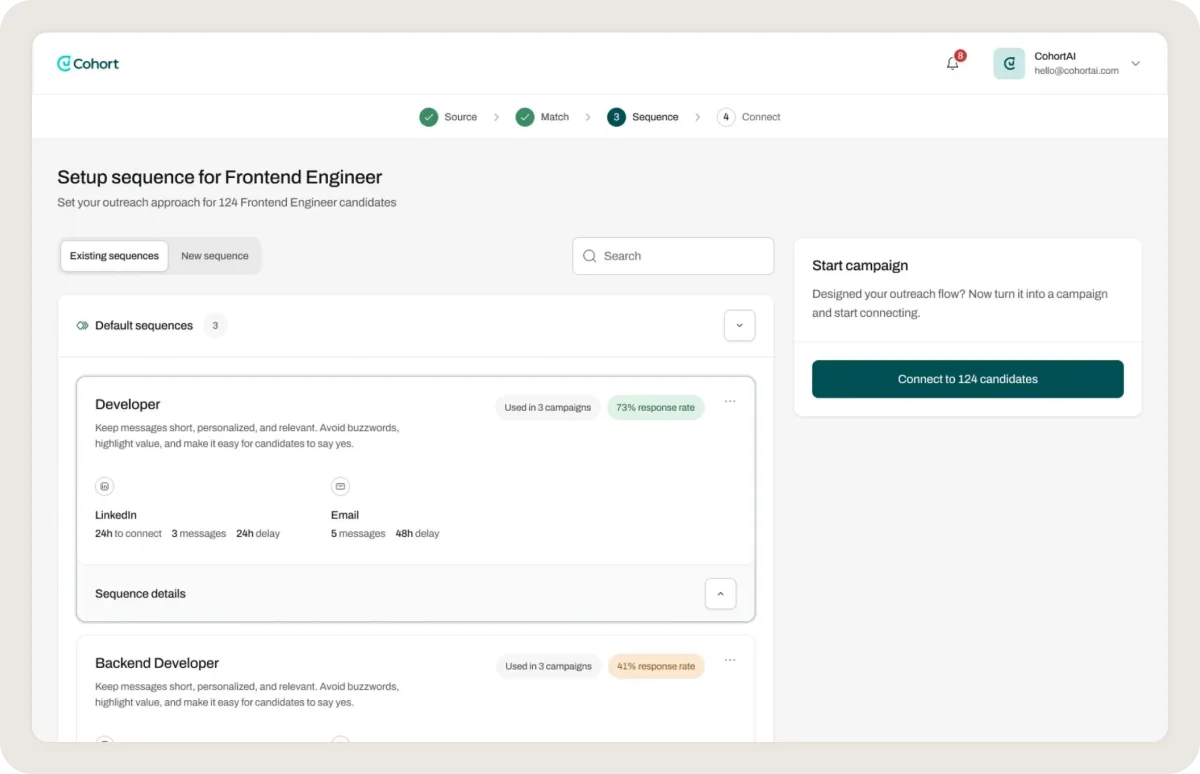
It prevents candidate drop-offs and keeps communication going, even when you’re not online.
5. Showcase your company culture through digital channels
In tech hiring, first impressions happen online.
Candidates check your website, social media, and dev communities before ever applying, and your digital presence can make or break their interest.
💡 Why it matters:
If your online footprint is corporate, outdated, or invisible, candidates move on.
Researches show that nearly 80% of job seekers use social media during their job search, and 52% look at your channels first to learn about your culture.
✅ What to do:
- Share real stories and visuals on your careers page as engineer quotes, behind-the-scenes videos, or team photos.
- Post regularly on LinkedIn, Twitter, and GitHub. Highlight product launches, team wins, hackathons, or engineering blog posts.
- Encourage employees to share their work-life moments online, as their posts are 3× more trusted than company ones.
💡 Pro tip
Cohort AI’s Sally the Scout scans multiple platforms, including GitHub, LinkedIn, and niche communities, to surface talent that traditional tools overlook.
It helps you tap into hidden candidate pools and avoid the noise of oversaturated job boards.
6. Source tech talent strategically
The best developers rarely apply through job boards, as they’re often busy building, solving, or are already employed.
Strategic sourcing involves identifying the platforms they use and establishing meaningful connections with them.
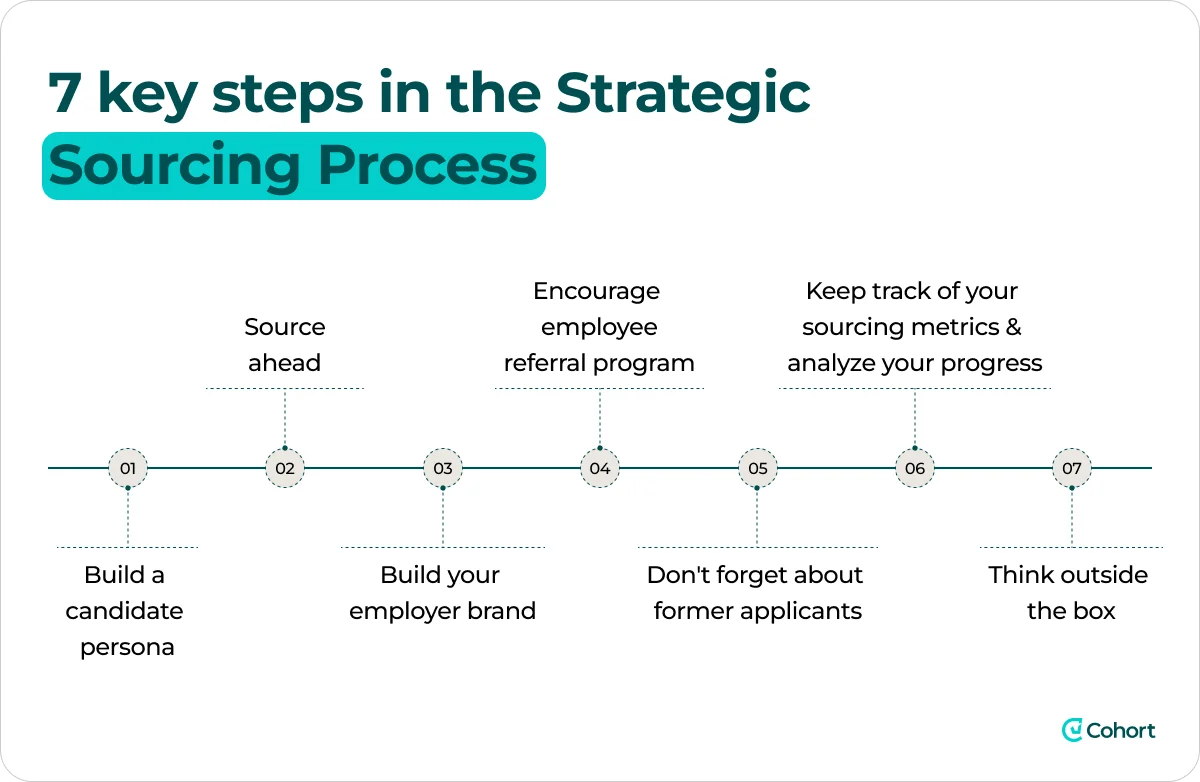
💡 Why it matters:
Over 75% of people who recently changed jobs used LinkedIn to inform their decision.
This means that candidates conduct their research well in advance of applying, and if they do apply, it is often after careful consideration and deliberation.
✅ What to do:
- LinkedIn: Use filters to search by skills and companies. Send messages that mention something specific from their profile.
- GitHub: Find contributors in your tech stack. Point to a project they worked on to start the conversation.
- Stack Overflow: Reach out to top answerers in relevant tags. Highlight their expertise and share what challenges you’re solving.
7. Write job ads that attract, not repel
The best engineers won’t apply to a vague, buzzword-filled job post.
They’re skimming quickly and looking for signals that the role is interesting, the company is modern, and they're a good fit.
💡 Why it matters:
Job ads are overloaded with requirements, confusing jargon, or gendered language.
Vague descriptions like “rockstar developer needed” or “cutting-edge projects” turn off great candidates.
Important keywords are missing, hurting visibility in search results.
✅ What to do:
- Be clear about the job: Describe the role, team, tech stack, and projects.
- List only must-have skills: Keep it short and focused.
- Mention the tools and methods you use: Highlight relevant, modern tech.
- Use common job titles and keywords: Make it easy to find in searches.
- Check for bias and accessibility: Remove unnecessary degree or age-related requirements.
8. Offer flexible work and modern perks that people actually want
Tech professionals want to work where they’re trusted, supported, and given the space to live their lives.
For example, perks like “free snacks” don’t cut it if people are burned out or being forced to be in the office five days a week.
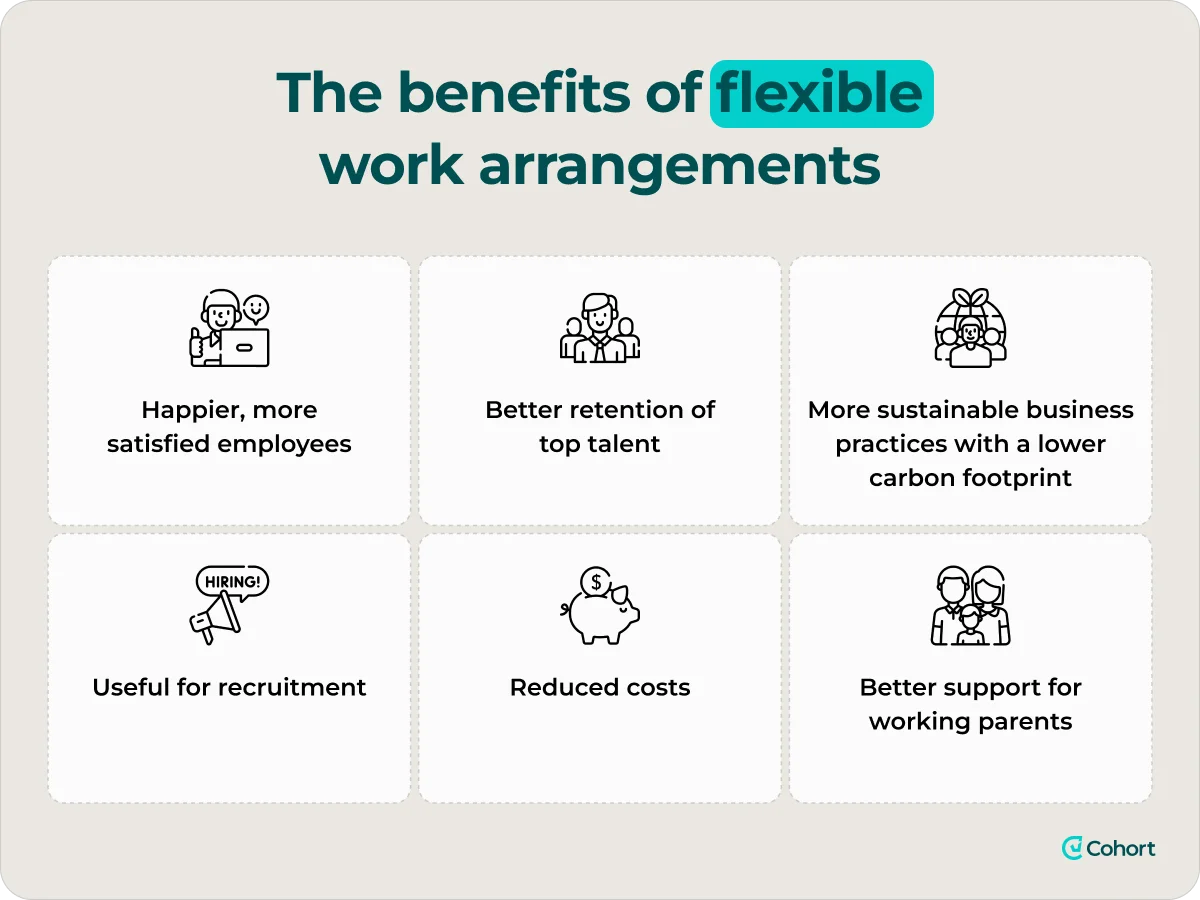
💡 Why it matters:
Flexibility is now a baseline expectation, as over 95% of workers want some form of remote work, with 54% preferring fully remote arrangements and 41% opting for hybrid options.
Ignoring this reality risks turning away top candidates before they even have the opportunity to apply.
✅ What to do:
- Embrace remote or hybrid work: If a job doesn’t truly require being in the office daily, offer location flexibility. Clearly state this in the job ad.
- Offer flexible hours: Ditch the rigid 9–5. Set some core hours if needed, but let people work when they’re most productive..
- Avoid micro-managing: Autonomy builds trust. Let results speak louder than hours or login times.
9. Create a tech-centric environment that developers want
Top engineers want the tools, autonomy, and support to build amazing things.
Be careful, as if your setup is slow, outdated, or overly bureaucratic, they’ll move on fast.
💡 Why it matters:
Developers often struggle with sluggish laptops, outdated tools, and slow, manual processes, while every technical decision requires multiple layers of approval.
Add in non-technical managers who micromanage and treat engineering like a cost center, and innovation grinds to a halt.
✅ What to do:
- Equip them properly: Offer high-performance gear, multiple monitors, and allow them to choose their development environments.
- Invest in infrastructure: CI/CD, cloud pipelines, and automated testing - these aren’t luxuries, they’re necessities.
- Give tech freedom: Let engineers propose the tools or frameworks they need. Don’t block open-source usage with red tape.
10. Track what works and continuously improve your hiring
Hiring is a system that needs constant tuning.
To consistently hire top tech talent, you need to measure what’s working, identify friction points, and refine your approach over time.
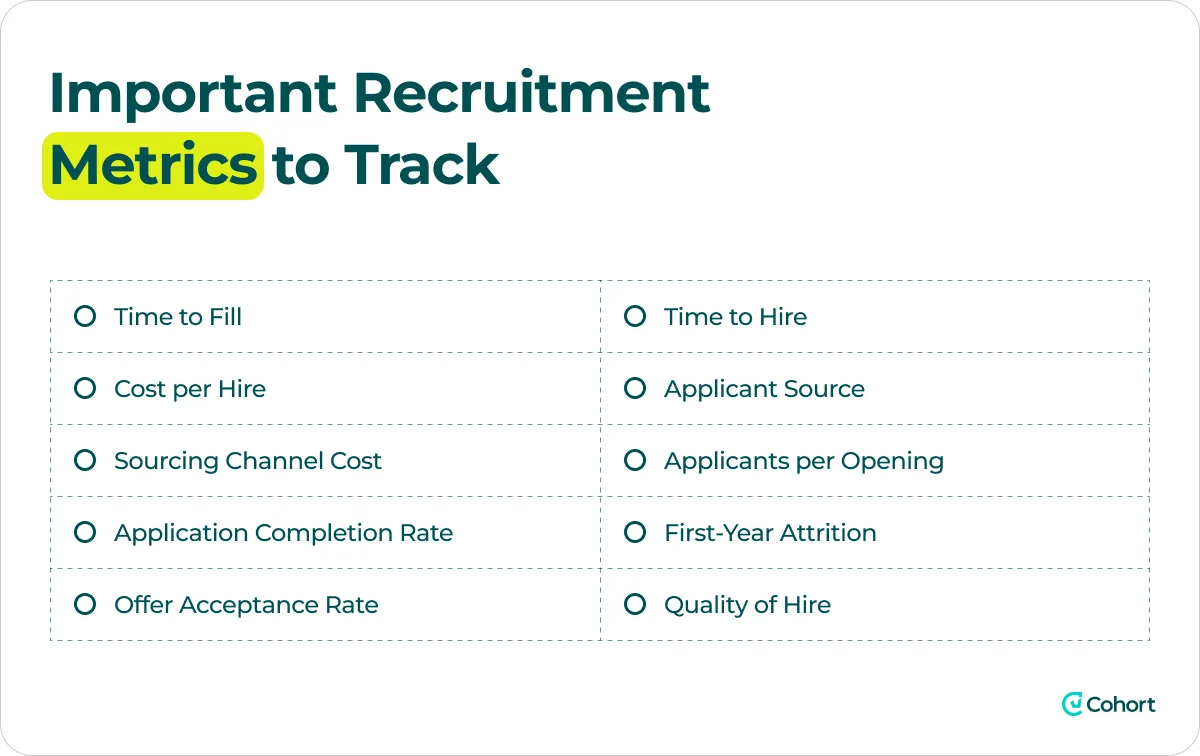
💡 Why it matters:
Without clear metrics, it’s easy to fly blind.
Tracking data, such as time-to-hire, offer acceptance rates, and pipeline drop-offs, helps you identify issues early and refine your hiring strategy for better results.
✅ What to do:
- Track essential KPIs: Measure time-to-fill, offer acceptance rate, funnel conversion, source of hire, quality of hire, and recruiter efficiency.
- Use A/B testing: Try tweaks such as shorter interview loops, new assessment platforms, or different outreach messages, and track their impact.
- Dig into diversity metrics: Break down hiring data by gender, race, background, and source. If diverse candidates drop off at the same stage, investigate why.
Cohort AI: Powering fairer, faster Tech hiring
Cohort AI transforms how modern teams hire by integrating generative AI and skills intelligence into every step of the recruitment journey, from sourcing to shortlisting.
We help hiring teams uncover top talent, reduce bias, and expedite decisions without compromising quality or human insight.
The platform’s intelligent agents handle the time-consuming tasks, allowing you to focus on what truly matters: selecting the right individuals.
Here’s how Cohort AI makes skills-first hiring a reality:
- Skills-first sourcing: Sally the Scout finds highly relevant candidates using real-world data such as portfolios, GitHub projects, and behavioral patterns. This approach prioritizes ability over job titles or resume buzzwords.
- Personalized outreach: Pete the Prospector sends authentic, role-specific messages written in your brand’s tone. Engagement improves without adding extra work.
- Smart, bias-aware ranking: The Talent Graph evaluates candidates based on actual ability, growth potential, and work style fit. This helps hiring teams go beyond credentials and find the best match.
- Hands-off follow-up: Charlie the Closer keeps candidates warm by handling replies and automating reminders. No more manual check-ins or missed connections.
- Reliable shortlists, faster: Skip manual screening and get AI-vetted, skills-matched candidates your team can trust.
Want to make better tech hires faster?
Book a demo and see how AI-driven, skills-based hiring can change the way you recruit.













